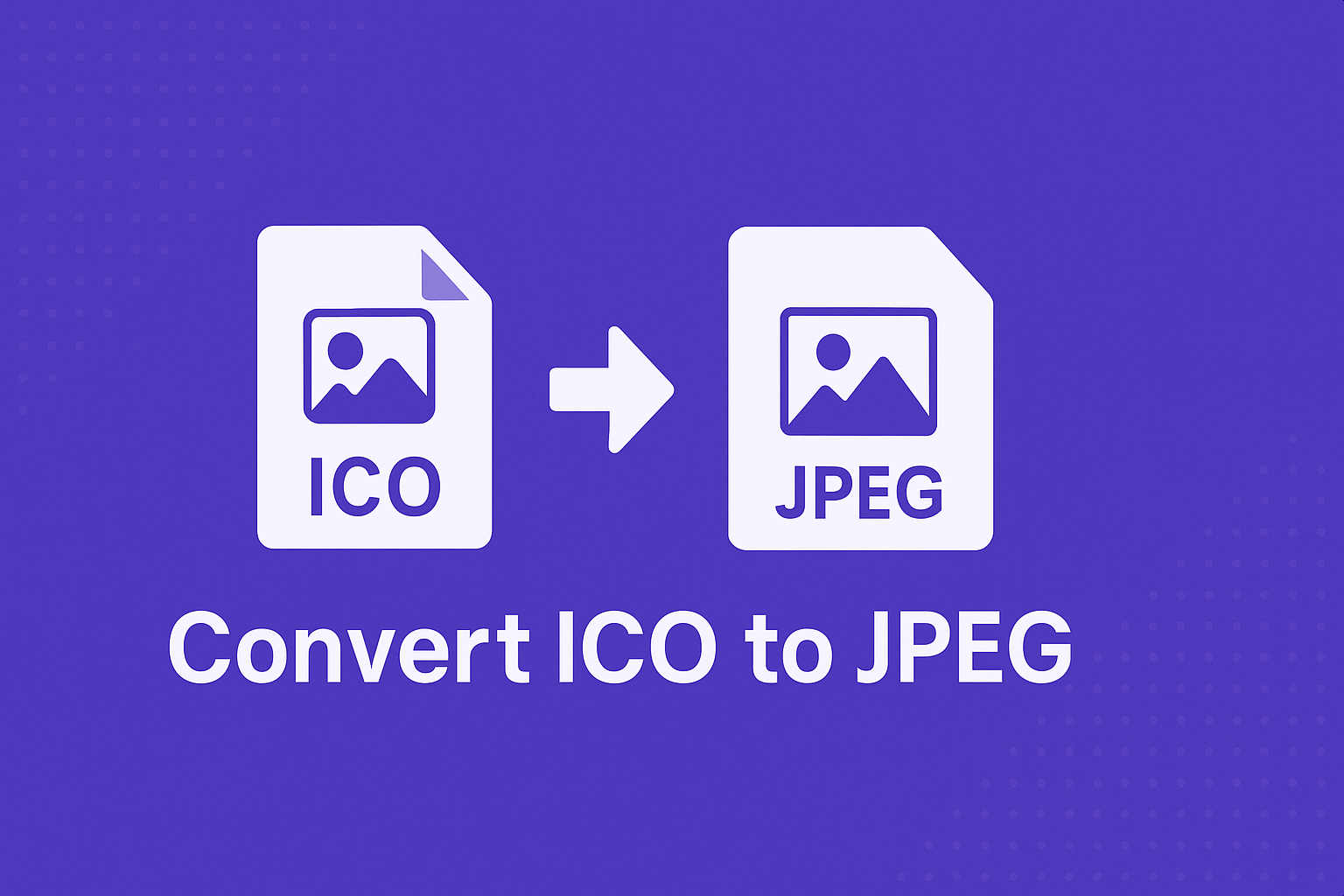
How and Why to Convert ICO Files to JPEG: Practical Uses and Fast Solutions
Posted on June 8, 2025 by monfield
ICO files are commonly associated with small-scale digital assets like website favicons and application icons. While essential for branding and interface design, ICO format isn’t ideal for general-purpose use. If you’ve ever needed to repurpose an icon for presentations, design comps, or social content, converting it to a more flexible and widely-supported image format like JPEG is the logical next step.
In this guide, we’ll explain the practical reasons to convert ICO to JPEG, common challenges with the ICO format, and how to make the conversion process quick and easy using the ICO to JPEG Converter from ConverterToolset.com.
What Is an ICO File?
ICO (icon) files are a format used to store one or more small images in a single container. They’re primarily used for application icons on Windows and website favicons. ICO files support multiple sizes and color depths, allowing them to scale depending on context.
However, they’re not meant for general display. Most image editors don’t treat them like standard image formats, and their use is largely confined to software development and web design.
Why Convert ICO to JPEG?
JPEG is a widely-supported image format used in everything from blogs and slideshows to mobile apps and emails. It’s ideal for photographic and raster-based images with rich color.
Common Reasons to Convert:
- Design Mockups: Use application icons in client presentations or web layout prototypes.
- Marketing Assets: Add your app’s icon to press kits, social posts, or landing pages.
- Image Sharing: JPEG is far easier to upload to websites, forums, or email clients.
- Editing in Image Tools: Many graphics editors and mobile apps can’t open ICO files directly.
- Converting for Display: Use JPEG to showcase icons in galleries, documentation, or UI guides.
ICO vs JPEG: Format Comparison
| Feature | ICO | JPEG |
|---|---|---|
| Purpose | Application and website icons | General image storage and sharing |
| File Type | Raster (multi-resolution container) | Raster (single image) |
| Transparency | Supported | Not supported |
| Compression | Lossless or uncompressed | Lossy |
| Compatibility | Limited to software/dev tools | Universally supported |
| Best Use | Icons for executables or browsers | Photos, previews, general images |
JPEG is far better suited for publishing, sharing, and presenting visual content. ICO is best kept for technical uses.
Common Use Cases for Converting ICO to JPEG
1. App Store Submission Previews
If you’re building documentation or promotional graphics, app icons often need to be displayed in marketing previews, and ICO format isn’t accepted.
2. Pitch Decks and Prototypes
UI or branding prototypes may need icons in a standard format to be displayed clearly on slides or in browser previews.
3. Team Sharing or Client Review
JPEGs are much easier to share internally or externally via email, project management platforms, or CMS interfaces.
4. Integrating with Web Content
If you’re publishing a product guide or feature breakdown, converting the ICO into a JPEG lets you embed it alongside screenshots and diagrams.
5. Converting Legacy Assets
Design teams managing old app branding may need to convert .ico files into formats that fit modern workflows.
How to Convert ICO to JPEG Easily
While some graphic editors can open ICO files, they may flatten transparency, miss certain resolutions, or require plugin support. An easier and faster option is to use the ICO to JPEG Converter on ConverterToolset.com.
Here’s How to Use It:
- Visit the Tool Page: Go to the ICO to JPEG converter tool.
- Upload Your ICO File: Drag and drop or select the file from your computer.
- Automatic Processing: The tool quickly converts the icon to a clean JPEG format.
- Download the Result: Click to save the new JPEG version to your device.
The entire process takes just seconds—no installation, no sign-up.
Tips for Clean Conversions
- Start with a High-Resolution ICO: Some ICO files include only low-res versions (16×16, 32×32). Higher-resolution icons convert better.
- Consider Removing Transparency: Since JPEG doesn’t support it, any transparent background will be filled—usually with white.
- Resize Before Use: Resize the JPEG after conversion if you’re integrating it into layouts or product visuals.
- Preview Your Output: Make sure the resulting image is crisp and not pixelated, especially if you intend to enlarge it.
Summary
ICO files serve a narrow but important purpose in application and web development. However, for broader communication, marketing, and content use, converting to JPEG gives you the flexibility to reuse icons across a wide range of formats and platforms.
The ICO to JPEG Converter from ConverterToolset.com offers a quick, easy, and reliable way to make the transition—ideal for designers, developers, and product teams who need professional results without extra software or setup.